

Maritime Archaeologist. How did you get into your job?
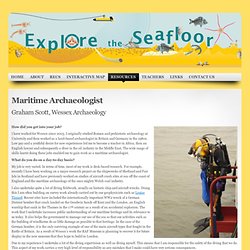
I have worked for Wessex since 2003. I originally studied Roman and prehistoric archaeology at University and then worked as a land-based archaeologist in Britain and Germany in the 1980s. Low pay and a youthful desire for new experiences led me to become a teacher in Africa, then an English lawyer and subsequently a diver in the oil industry in the Middle East. The wide range of skills learnt doing these jobs enabled me to gain work as a maritime archaeologist. What do you do on a day-to-day basis? My job is very varied. I also undertake quite a lot of diving fieldwork, usually on historic ship and aircraft wrecks. Ole Crumlin Pedersen: Doyen of nautical archaeology - Obituaries - News.
Always hands-on, he was still at work when he died on a blueprint of the 1500 BC Dover boat intended for a gala anniversary crossing of the Channel next summer.
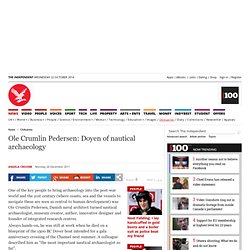
A colleague described him as "the most important nautical archaeologist so far". A turning point in his career came in 1962 when Viking ships were revealed in the mud of Roskilde Fjord at Skuldelev. A sunken vessel long known as "Queen Margaret's ship" had blocked the passage through the shallow waters leading to the cathedral city and medieval capital, Roskilde, a target for shipborne raids from the north. Crumlin, as a young naval architect and diver, identified the timbers as Viking and reported that there were at least five ships of different types. And so it proved when the site was pumped out within a surrounding coffer-dam and the timbers cleaned by hand, tagged, wrapped and individually lifted. Thor Heyerdahl. Thor Heyerdahl (Norwegian pronunciation: [tuːr hæiːərdɑːl]; October 6, 1914 – April 18, 2002) was a Norwegian ethnographer and adventurer with a background in zoology, botany, and geography.
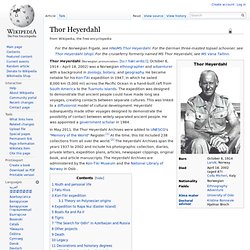
He became notable for his Kon-Tiki expedition in 1947, in which he sailed 8,000 km (5,000 mi) across the Pacific Ocean in a hand-built raft from South America to the Tuamotu Islands. The expedition was designed to demonstrate that ancient people could have made long sea voyages, creating contacts between separate cultures. This was linked to a diffusionist model of cultural development. Heyerdahl subsequently made other voyages designed to demonstrate the possibility of contact between widely separated ancient people.
Keith Muckelroy. George Bass (archaeologist) Jacques Cousteau. Jacques-Yves Cousteau AC (French: [ʒak iv kusto]; commonly known in English as Jacques Cousteau; 11 June 1910 – 25 June 1997)[1] was a French naval officer, explorer, conservationist, filmmaker, innovator, scientist, photographer, author and researcher who studied the sea and all forms of life in water.
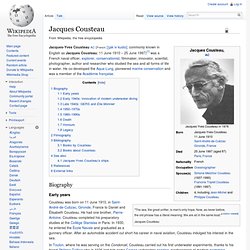
Keith Muckelroy. Frédéric Dumas. Eric Sidney Higgs. Eric Sidney Higgs (1908–1976) was the founder of the "Cambridge Palaeoeconomy School", which focused on the economic aspects of archaeology.
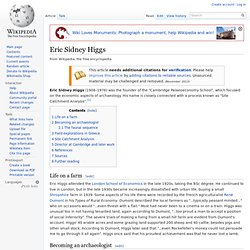
His name is closely connected with a process known as "Site Catchment Analysis".[1] Life on a farm[edit] Eric Higgs attended the London School of Economics in the late 1920s, taking the BSc degree. He continued to live in London, but in the late 1930s became increasingly dissatisfied with urban life, buying a small Shropshire farm in 1939. Some aspects of his life there were recorded by the French agriculturalist René Dumont in his Types of Rural Economy. Becoming an archaeologist[edit] Department of Anthropology. Lewis Binford obituary. Lewis Binford, who has died aged 79, was the most influential archaeologist of the 20th century.
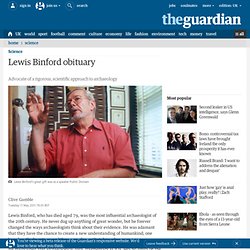
He never dug up anything of great wonder, but he forever changed the ways archaeologists think about their evidence. He was adamant that they have the chance to create a new understanding of humankind; one based on the long term and the macro-forces that drive change. He maintained that archaeological data, fragmentary as it is, sets no limits on the questions that can be asked about the past. He advocated scientific rigour and turned archaeologists away from writing "Just-so" stories about the past. Along the way there were arguments, bombastic debates and academic feuds.
Sir Mortimer Wheeler (British archaeologist) CitationsPrint Email Last Updated Click anywhere inside the article to add text or insert superscripts, subscripts, and special characters.
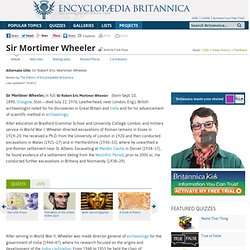
You can also highlight a section and use the tools in this bar to modify existing content: We welcome suggested improvements to any of our articles. You can make it easier for us to review and, hopefully, publish your contribution by keeping a few points in mind: Encyclopaedia Britannica articles are written in a neutral, objective tone for a general audience. Article Free Pass Alternate title: Sir Robert Eric Mortimer Wheeler. Peter Throckmorton - Institute of Nautical Archaeology. By George Bass Adapted from the Summer 1990 INA Newsletter, Volume 17, No. 2 Peter Throckmorton made more than an enormous impact on our field of nautical archaeology.
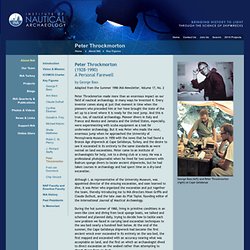
In many ways he invented it. Every inventor comes along at just that moment in time when the pioneers who preceded him or her have brought the state of the art up to a level where it is ready for the next jump. And this is true, too, of nautical archaeology. George F. Bass - Institute of Nautical Archaeology. Although he began reading everything he could find on diving at an early age, and had more books about the underwater world than about archaeology even when he was a graduate student, George Bass never dreamed that he would ever dive.
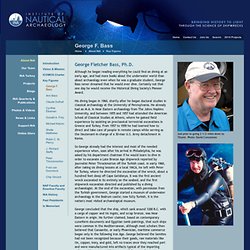
Certainly not that one day he would receive the Historical Diving Society's Pioneer Award. The Honor Frost Foundation. 28 October, 1917- 12 September 2010 ©INA – Image by Peter Throckmorton in Bodrum and provided by George Bass Honor Frost was an early pioneer in the field of underwater archaeology.
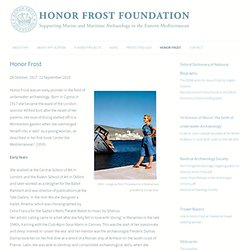
Born in Cyprus in 1917 she became the ward of the London solicitor Wilfred Evill after the death of her parents. Her love of diving started off in a Wimbledon garden when she submerged herself into a ‘well’ as a young woman, as described in her first book ‘Under the Mediterranean’ (1959). Early Years. Philippe Tailliez. Philippe Tailliez (French: [tɑje]; 15 June 1905, Malo-les-Bains – 26 September 2002, Toulon, France) was a friend and colleague of Jacques Cousteau. He was an underwater pioneer, who had been diving since the 1930s. Biography[edit] TrowelBlazers. 7 Great Innovators in Archaeology.